Genre: Racing Developer: Sega Enterprises Publisher: Sega Enterprises Players: 1 Released: 1987
Sega made a name for itself in arcades during the 1980s with a string of quality racing games that are household names today. Who hasn’t played OutRun, or Hang-On? Both of those classics used Sega’s “taikan” or “body sensation” designs to immerse players and give the racing action a whole new level of realism. Sega was all about bringing as authentic a racing experience as possible to gamers, a philosophy that also applied to its 1986 dirt bike game, Enduro Racer. The arcade cabinet featured a great handlebar controller that let players pull back when jumping. It was a nice touch that made Enduro Racer feel like a natural evolution to Hang-On. The excellent visuals and amazing soundtrack by Hiroshi Kawaguchi made that transition smooth and seamless.
Given just how much of a step up Enduro Racer was over Hang-On in terms of presentation, and considering its handlebar controller, I was more than a bit skeptical when the game arrived on the Master System in 1987. The game isn’t usually mentioned in conversations about Sega’s Sega’s Super Scaler hardware, even though it shares the same arcade board as Hang-On and Space Harrier. It was quite advanced for its time, with a colorful behind-the-bike view that I wasn’t confident could be replicated on the Master System. Honestly, I was expecting a port on par with Hang-On, where the great gameplay and visuals made up for the simplified controls.
It turned out that my fears were justified. The game is almost entirely different in feel and style from the original. Now, before I continue, let me just say that those fears were allayed by what Sega included in the port but only in the Japanese version (more on that in a minute). The original game played much like Hang-On and OutRun in that the single course was divided into checkpoints, and it was filled with sharp turns. Players jumped over rocks and other obstacles while navigating the course and avoiding other racers. The courses had dips and hills that often obscured what lay beyond the ramp, making each jump more challenging.
All of that was gone on the Master System. The camera was now fixed in a ¾ view, giving the action an isometric perspective. The checkpoints were gone, as were the curves. Each checkpoint was now its course and extended in a straight line. This design change caused the races to be more linear and predictable, even with the differently-sized ramps and obstacles. The occasional branching path didn’t change things up much since both continued in the same direction and eventually merged. I’m sure that it would have been too taxing on hardware to try and replicate the curves using this camera angle, but it, unfortunately, made the courses less exciting. The rocks and other debris were still there, but it didn’t make up for the fundamental change to how Enduro Racer played. Unlike the coin-op game, where ramps play an integral part in making course navigation challenging, it’s often more sensible to avoid them entirely in the Master System port so as not to lose any time. In both versions, the game ends when the timer runs out, but on console, it forces players to avoid the very thing that made Enduro Racer so fun in the first place. It feels a bit cheap and makes the gameplay more subdued.
Other changes aggravated the problem. For instance, stage four (stage 3 in the arcade game) had you sink into the water if you missed a jump instead of slowly skipping across it. This alteration caused a much greater time loss than it should have, and it was even possible to sink a second time because the temporary invincibility you got when starting sometimes expired before you could get back on the track. Moreover, drifting on turns is gone since there aren’t any. I’m happy to report that using wheelies to increase jump height and distance is still a factor.
The worst part was that the game we got in the West was much different from the Japanese version. That port adapted the coin-op’s single course into 10 different stages and had a nice diversity of environments like desert, beach, ruins, and forest. Half of these courses were eliminated in the localizations and replaced with reruns of the five that remained. The Japanese version also had an after-race map, like OutRun, that showed the players’ progress. There was also a damage meter in the lower left corner that increased when obstacles like rocks are hit, and it incurs a time penalty when it reaches 98. The chance to use bonus points earned from passing other racers to purchase upgrades between stages was retained at least, but the package North American and European Master System owners got was a significant downgrade. Reportedly, the reason for these unwelcome changes was simple: cost. The Western cartridge used a ROM that was literally half the size of the 256KB Japanese release. I like a budget title as much as the next fellow but not when it requires chopping off half the game. Furthermore, the game wasn’t all the large, to begin with, and I’m thinking that its small ROM size was likely what led Sega to omit all the dips and hills that made the original’s tracks so thrilling.
Thus, I cannot in good conscience recommend playing the western Enduro Racer release. Discard it. Forget it exists. Speak of it no more. The Japanese version is the one you want, and thankfully, it can be played without problems on other Master Systems. There’s no language barrier, so it’s the best version of Enduro Racer to be had on Sega’s console. Just be prepared for an experience that’s quite different from the arcade original but a reasonable approximation of it.
There isn’t much else to say about Enduro Racer. It’s a competent conversion that made the changes necessary to bring a more advanced arcade title to the Master System without changing its basic essence. I suppose that fundamentally, the 8-bit conversion still retains much of what made Enduro Racer such a blast in the arcade, but it just does it differently. In that regard, I think the Japanese version does a better job, but the others are entirely disappointing and miss the mark.

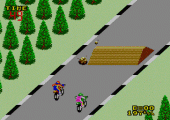
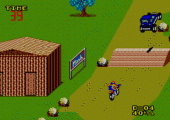
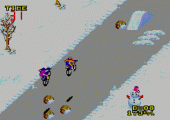
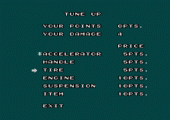
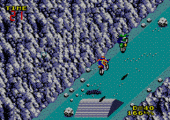
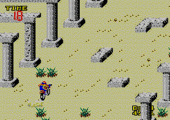
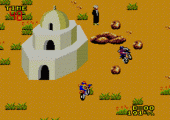
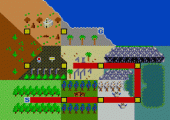
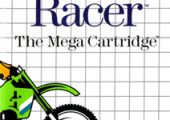
Recent Comments